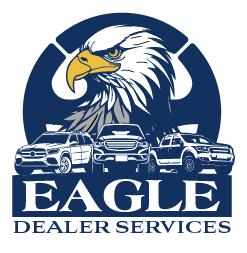Used Car Reconditioning Operations and Profitability Policy
Every dealership struggles with reconditioning timelines, margins, and department alignment. The balance between Fixed Ops and Variable Ops often determines whether you’re converting paper profit into cash — or sitting on aged inventory that quietly drains your bottom line. Here’s how to fix it without sacrificing profitability.
Fixed and Variable Operations — The 50/50 Line
While service is Fixed Operations, used car reconditioning sits right on the line — 50% fixed and 50% variable. Why? Because reconditioning serves a three-part purpose:
• It keeps the shop productive and keeps techs working.
• It provides an exit strategy for trade-ins that sit as paper profit on the books until those units are reconditioned, retailed, and liquidated.
“Gross is an opinion. Cash is king.”
• It enables the dealership to build a scalable used car department with much closer to unlimited potential than any other department, based on its ability to source cars effectively and staff the sales team efficiently.
When service operates at that level, it becomes a true growth engine for the store. Recon isn’t just about fixing cars — it’s about converting paper profit into cash, fueling sourcing velocity, and keeping the dealership’s retail pipeline moving at full capacity.
Operational Capacity and Scale
Service is limited by the number of bays, the number of techs, and the hours in a day. Even with extended hours or multiple shifts, you’re capped by physical constraints.
The used car department, on the other hand, isn’t capped. The used car market is four times bigger than the new car market — and roughly 25 times larger than any single franchise opportunity. That’s the growth engine. That’s where scale happens.
Internal Pricing Parity — Mechanical and Maintenance
Used cars should absolutely pay the same mechanical repair rate that’s on the door. If a retail consumer pays $200 an hour, the used car department should pay the same.
On the flip side, if the dealership offers consumers discounted menu maintenance pricing on items like rotations, oil changes, or brake jobs, then used cars should pay those same discounted menu rates as well.
If we choose to occasionally discount the labor rate for a retail customer because it makes good business sense, we should do the same for used cars when it makes sense. A discounted job — depending on tech availability — may be a better choice than no job at all.
Recon Turnaround Standards and Accountability
A reasonable expectation is that vehicles move from the back to the front line within 72 hours. As part of that process, they must go in and out of service within 48 hours of being traded or acquired.
Service must be accountable for writing repair orders immediately when the vehicle comes into stock — not the following morning. If a vehicle is delivered from the auction at 2 p.m. or traded in at 5 p.m., it should be written up and entered into the workflow process right then — and the 48-hour clock starts.
This high standard of service also requires that the service department provide mechanical reconditioning to used cars anytime the sales department is open. If a used car dies on the lot at 7 p.m., a tech should be available. Meantime, that tech can be processing used car workflow.
If service fails to get the vehicle out of the shop within that 48-hour window, the labor rate retained by service should be reduced by a pre-determined percentage based on a productivity grid.
This doesn’t mean the used car department retains more gross. Used cars should still pay the same retail rate, but service would not retain the same gross dollars from those jobs that don’t meet time standards. The difference between what used cars pay and what service retains would go to Other Income, not to the service department.
This structure enforces true accountability. We’re not penalizing departments — we’re aligning incentives.
Technician Assignment and Workflow Efficiency
Another important consideration is dispatch and QC. The car must get to the right tech so it gets in and out quickly and fixed right the first time.
If we shortcut that process or assign jobs purely based on open stalls, we risk slowdowns, comebacks, and lost time. The last thing we want is a car sitting on the lot 30 days later with a dashboard lit up like a Christmas tree — by then, salesmen walk around it, and the cost of delay just compounded.
Advisor Pay Plans and Alignment
Another critical factor is how the service advisor is compensated when it comes to used car reconditioning. Are they paid a commission based on the hours they sell to used cars? Are they paid based on how fast vehicles turn on the lot? Or are they paid an hourly rate with a bonus tied to overall productivity and recon throughput?
The answer matters — because we want the advisor’s pay plan aligned with the interests of the used car manager and the dealership as a whole. That means:
• Not recommending unnecessary maintenance packages, factory maintenance packages, or any service that doesn’t directly improve the vehicle’s saleability or safety.
• Always using non-OEM parts on non-CPO vehicles when appropriate.
• Reviewing every vehicle carefully to ensure that technician recommendations are true needs, not just line items.
There’s so much more to the reconditioning process than just the door rate. The door rate conversation alone is one component of a multi-tiered growth and profitability strategy.
Call to Action
If your recon process isn’t driving profitability, reach out to Eagle Dealer Services — we can help your fixed and variable operations work in sync.

